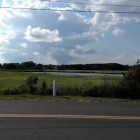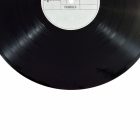The Suburbs, in Short
In my last post I discussed the frequent dissimilarity between the actual American suburbs and their depictions in most novels we tend to think of as “suburban.” This is not to say, though, that the reality of contemporary suburban life remains unaddressed in today’s fiction. Here I’d like to suggest that over the course of the past half-century-plus, the literary art form that has most consistently portrayed the suburbs with both complexity and sensitivity has been not the novel, but the short story.
There are a few reasons for this. First, the story can be written and published relatively quickly; it is a nimble form that can react to changes in the world with celerity rare in other mediums.
Second—and I say this as a practitioner of the form myself—there is almost no money in literary stories. When compared with the time it takes to craft a truly good story, payments for fiction in most magazines range from nothing to practically nothing. But there is an upside: with so little money in the game, writers are under no real pressure to conform to any set audience or market expectations. Unlike a novel (let alone a television show or movie), a short story can present the world any way it sees fit without fear of slipping sales.
Third, like novels, the story works within a tradition. But while the suburban novel answers to a lineage of anti-suburb tomes like Revolutionary Road and Babbit, the genealogy of contemporary short fiction in the suburbs traces back nearly perfectly to John Cheever.
Take, for example, “The Housebreaker of Shady Hill,” from Cheever’s 1958 collection of the same name. Here the protagonist Johnny Hake, under financial distress, steals cash from a neighbor, and as a result experiences a kind of moral breakdown. It isn’t that Hake is such a model of honesty and ethical rightness; he admits to having cheated on his wife and to being less than perfectly scrupulous in his business dealings. So why is it that this crime haunts him?
More than the actual stealing of money, it is that he has betrayed his neighbors. “I had done something so reprehensible,” Hake tells us, “that it violated the tenets of every known religion. I had stolen, and what’s more, I had criminally entered the house of a friend and broken all the unwritten laws that held the community together.”
This is no joke, no poke at the squares out in the ‘burbs with their bourgeois ways. What Cheever brought to the literary table was an appreciation of the complex life of the suburbs where little more than disdain and parody previously existed. While it could sometimes touch a nerve or two in the service of honesty, Cheever’s fiction was not dismissive of those “unwritten laws that held the community together.” Rather, the stories respected those laws for what they were to both the fictional characters and actual residents (of whom Cheever was one). To this point, he said of the suburban world, “Life can be as good and rich there as anyplace else … It goes without saying that the people in my stories and the things that happen to them could take place anywhere.”
Contemporary short fiction of the suburbs does not always fit neatly into the category we’ve come to think of as “Cheever-esque,” but a look at some of the most impressive examples shows that his tendency to examine the environment with a critical yet sympathetic eye lives on.
Here I offer three short stories published in the last few years, each with a very different style and very different views of the American suburbs.
“Robert E Lee is Dead” by Danielle Evans (collected in Evans’s 2011 book Before You Suffocate Your Own Fool Self).
This story, set in an area just outside Atlanta, follows an academically talented high school student, Crystal, as she befriends another girl, this one with significantly lower prospects for the future. It is a heartbreaking and vivid tale of teenage social navigation. But for our purposes here, the story is a portrait of a changing suburban landscape in a changing world. “It always took a minute to recognize my own neighborhood,” the narrator Crystal tells us. “It seemed like every day a new apartment building was being built or an older store or house torn down. Things changed quickly in those years: Eastdale pushed into the suburb of Lakewood from one side, while white flight created suburbs of the suburbs on the other.” And just a few sentences later, our narrator tells us, “The neighborhood in the immediate vicinity of our high school was called The Crossroads; don’t ever let anyone tell you that the South is big on subtlety.”
Apartment buildings. Old edifices being razed. Suburbs of suburbs. The story offers us a wholly new view of the towns that ring our bigger cities, and after reading this story most tales of the homogenous suburbs, no matter how good, start to feel slightly out of date. With this one story, Evans has significantly altered the genre and brought it into the present.
“Writs of Possession,” by Benjamin Percy (published in Virginia Quarterly Review, Spring 2011).
The story is made up of semi-connected vignettes, all of them concerned in one way or another with the housing crisis. After meeting a sheriff serving eviction notices, we encounter squatters, remodelers, arsonists, repo men, and children of economic misfortune. Through the nine numbered pieces we end up with a scale model of the nation’s financial woe. We end up with this:
The farther you travel into the neighborhood, the more unfinished it becomes. Houses that are naked of siding—the sheets of felt paper stapled to their exterior coming loose to flap in the wind like rotten skin. Houses that are missing windows and doors. Houses that are nothing more than a skeletal frame and lots that are nothing more than an excavated hole, a muddy cavity collapsing inward.
I have yet to read a more engaging, moving, and troubling portrait of the middle (and lower-middle) class in flux than this. With each section the portrait of a world in trouble becomes clearer and sadder, and by the end we find ourselves in possession of a deeper understanding of the word “home.”
“The Next Thing” by Steven Millhauser (published in Harper’s, May 2008, and later collected in We Others: New and Selected Stories).
The English language hasn’t yet come up with a single word to describe the stories of Steven Millhauser. Surreal? Magical? Fantastical? Surely all those apply, but they don’t quite sum up everything these stories offers their readers. Millhauser somehow conjures the strangest of tales while still connecting with the humans behind them.
“The Next Thing” concerns the corporate/commercial takeover of a town (and who can deny the ubiquity of malls, chain restaurants, and car dealerships in contemporary American suburbs, despite the relative lack of them in most suburban narratives?). A retail business opens harmlessly enough: “just another one of those places on the outskirts of town, with its opening–day hoopla and its vague promise of a better life.” But this is no ordinary box store: “this place was so big that it was bigger than big, it was so big that big no longer made any sense.”
And it keeps getting bigger, more expansive, seemingly endless. The unnamed narrator, at first reluctant to join in the Next Thing craze, eventually gives in to its irresistible lure. As the story progresses, we see the store (now so much more than a store) supplant the town itself—the corporate entity no longer serving the community, but rather the other way around. The title, unlike those of the recent spate of “new” and “modern” television sitcoms focused on some version of suburban life, seems to be in conversation not with the past, but with the future. This is coming, it tells us, right around the corner.
These are not the only three stories offering a deeper view of the contemporary suburbs. Other writers, including Sana Krasikov, Scott Nadelson, David Philip Mullins, and Andrew Porter, as well luminaries such as Antonya Nelson, Lorrie Moore, Ethan Canin, Jhumpa Lahiri, and George Saunders, have in recent years—and in interesting ways—taken on suburban life in their short stories. But the above three are the stories I keep coming back to.
What we find in these are suburbs full of racial and economic tensions, towns torn between commerce and humanity—all of it being dealt with by very real human beings. It is not the soul-killing conformity of the anti-suburb suburban novel. It is, rather, a portrait of a place just as complicated and confusing as any we encounter in the real world. While reading (and rereading) them I inevitably find myself asking this question: if the suburbs are so homogenous and predictable—as we so often like to tell ourselves—then how can these three stories, each one different from the other, each one full of all the messy intricacies of human existence, all feel so true?



